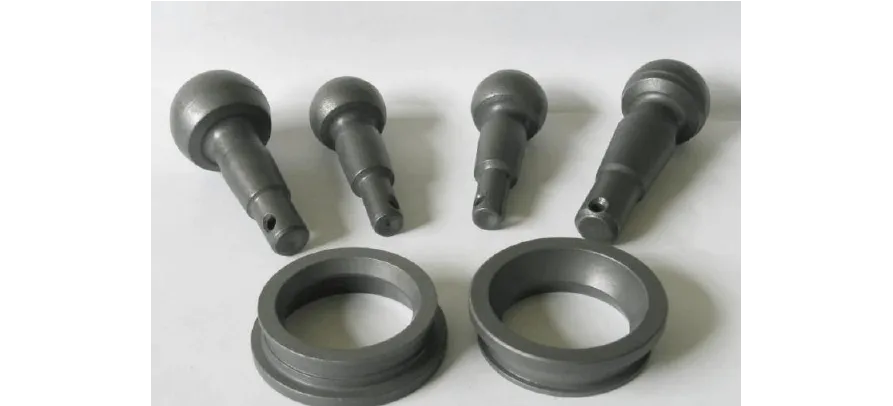Memahami Fosfat Logam: Proses, Metode, dan Aplikasi
Pendahuluan
Jelajahi proses kimiawi yang rumit dari fosfat logam, tujuannya dalam meningkatkan ketahanan terhadap korosi, dan beragam aplikasinya di berbagai industri.
Apa yang dimaksud dengan Fosfat Logam?
Fosfat melibatkan reaksi kimia dan elektrokimia untuk membentuk membran konversi kimia fosfat pada permukaan logam. Lapisan pelindung ini, yang dikenal sebagai film fosfat, melindungi substrat logam dari korosi dan meningkatkan daya rekat ketika digunakan sebagai primer untuk cat atau pelapis lainnya.
Tujuan fosforisasi logam
Tujuan utama fosforisasi logam adalah untuk meningkatkan ketahanan terhadap korosi dan keausan. Dengan merendam logam dalam larutan yang mengandung fosfat dan nitrida, terbentuklah lapisan yang tahan korosi. Proses ini dapat diterapkan pada berbagai logam seperti besi, baja, dan aluminium, dengan ketebalan lapisan yang dikontrol oleh parameter tertentu.
Metode Fosfat Logam
Pengawetan
- Asam fosfat digunakan untuk membuat lapisan pelindung yang lebih tebal, ideal untuk aplikasi tugas berat.
Pencucian Alkali
- Alkali fosfat menghasilkan lapisan yang lebih tipis, cocok untuk aplikasi yang lebih ringan.
Teknik Inovatif
- Metode pelapisan fosfat dan ion bebas kromium menawarkan manfaat lingkungan dengan mengurangi penggunaan bahan kimia berbahaya.
Langkah-langkah pra-perawatan, termasuk penghilangan minyak dan karat, sangat penting untuk memastikan hasil yang optimal. Mempertahankan kontrol yang ketat terhadap parameter seperti suhu dan pH selama proses berlangsung untuk memastikan kualitas film fosforisasi.
Aplikasi fosforisasi logam
Fosfat logam banyak digunakan dalam industri seperti:
Manufaktur Otomotif
- Meningkatkan daya tahan dan ketahanan korosi pada komponen mobil.
Elektronik
- Memberikan permukaan yang halus dan tahan korosi untuk komponen elektronik.
Militer
- Melindungi peralatan militer dari kondisi lingkungan yang keras.
Bangunan dan Konstruksi
- Meningkatkan masa pakai komponen logam struktural.
Manufaktur Mekanis
- Memastikan komponen mekanis tahan terhadap keausan dan korosi.
Keuntungan dan Kerugian Fosfat Logam
Keuntungan:
- Peningkatan ketahanan terhadap korosi.
- Proses yang sederhana dan efisien.
- Kompatibilitas dengan perawatan lain seperti pengecatan, pelapisan, dan pelapisan listrik.
- Dapat dilakukan pada suhu kamar, menghemat biaya energi.
Kelemahan:
- Potensi dampak lingkungan akibat penggunaan bahan kimia.
- Permukaan yang kasar mungkin memerlukan pemrosesan tambahan untuk menghaluskannya.
- Warna rendah dan hasil akhir yang mengkilap.
- Membutuhkan kontrol yang ketat terhadap parameter cairan untuk menjaga kualitas.
Kesimpulan
Fosforisasi logam adalah proses serbaguna dan efektif untuk meningkatkan daya tahan dan ketahanan korosi berbagai substrat logam. Dengan memahami metode, aplikasi, dan manfaatnya, industri dapat memanfaatkan proses ini untuk mencapai hasil yang unggul dalam perawatan logam.
PERTANYAAN YANG SERING DIAJUKAN
Logam apa yang dapat diolah dengan fosforisasi?
- Fosfat dapat diaplikasikan pada besi, baja, aluminium, dan logam lainnya untuk meningkatkan ketahanan terhadap korosi.
Apakah ada metode fosforisasi yang ramah lingkungan?
- Ya, teknik inovatif seperti fosfat bebas kromium dan pelapisan ion dirancang agar lebih ramah lingkungan.
Mengapa pra-perawatan penting dalam fosforisasi?
- Pra-perawatan, seperti penghilangan minyak dan karat, memastikan bahwa permukaan logam bersih dan siap untuk proses fosfat, yang mengarah pada daya rekat yang lebih baik dan keefektifan lapisan fosfat.
Dapatkah fosfat dikombinasikan dengan perawatan lain?
- Tentu saja, fosfat sering digunakan sebagai primer untuk pengecatan, pelapisan, atau pelapisan listrik untuk meningkatkan daya tahan dan penampilan logam secara keseluruhan.

